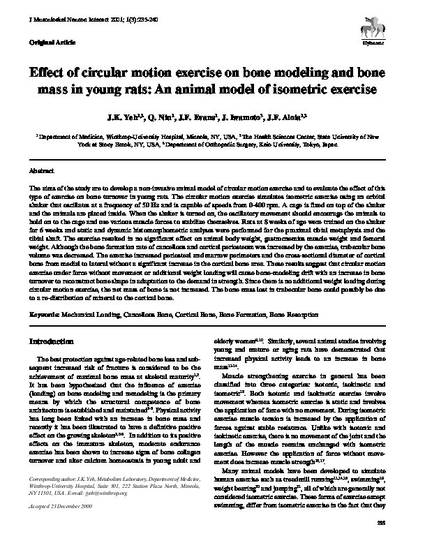
The aims of the study are to develop a non-invasive animal model of circular motion exercise and to evaluate the effect of this type of exercise on bone turnover in young rats. The circular motion exercise simulates isometric exercise using an orbital shaker that oscillates at a frequency of 50 Hz and is capable of speeds from 0-400 rpm. A cage is fixed on top of the shaker and the animals are placed inside. When the shaker is turned on, the oscillatory movement should encourage the animals to hold on to the cage and use various muscle forces to stabilize themselves. Rats at 8 weeks of age were trained on the shaker for 6 weeks and static and dynamic histomorphometric analyses were performed for the proximal tibial metaphysis and the tibial shaft. The exercise resulted in no significant effect on animal body weight, gastrocnemius muscle weight and femoral weight. Although the bone formation rate of cancellous and cortical periosteum was increased by the exercise, trabecular bone volume was decreased. The exercise increased periosteal and marrow perimeters and the cross-sectional diameter of cortical bone from medial to lateral without a significant increase in the cortical bone area. These results suggest that circular motion exercise under force without movement or additional weight loading will cause bone-modeling drift with an increase in bone turnover to reconstruct bone shape in adaptation to the demand in strength. Since there is no additional weight loading during circular motion exercise, the net mass of bone is not increased. The bone mass lost in trabecular bone could possibly be due to a re-distribution of mineral to the cortical bone.
Available at: http://works.bepress.com/jodi-evans/6/
